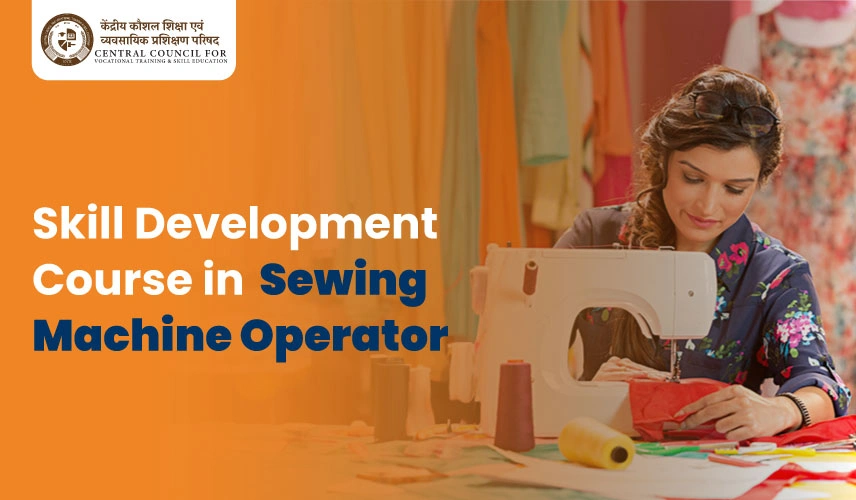- +91 8595350621
- info@ccvte.org
- C4/97B, Keshav Puram, Delhi-110035
Textile Design

Skill Development Program in Textile Design
Textile design is a dynamic and creative field that combines artistry and technical expertise to develop innovative fabrics and materials. Textile designers are professionals who create original designs for fabrics used in clothing, home furnishings, and industrial applications. Their work involves a deep understanding of color, pattern, texture, and fabric structure, enabling them to translate artistic concepts into functional and aesthetically pleasing textiles. Textile designers use a variety of techniques, including weaving, knitting, printing, and digital design, to produce textiles that meet specific functional and visual requirements. They stay up-to-date with fashion trends, consumer preferences, and technological advancements in textile production to ensure their designs remain relevant and cutting-edge. A career in textile design offers diverse opportunities in fashion houses, textile manufacturers, interior design firms, and independent consultancy. This field is ideal for individuals who have a passion for art, fashion, and innovation, and who enjoy transforming creative ideas into tangible products. This profession demands a blend of creativity and technical expertise, requiring designers to be proficient in both traditional design methods and modern digital tools. Their work not only involves creating original patterns and motifs but also understanding the properties of different materials to ensure the practicality and durability of their designs.
Why did you choose the Textile Designer Course from CCVTE?
- A skill development course in textile design is specially designed for students aiming for a career in the textile industry.
- The course provides practical skills and knowledge required in textile design.This comprehensive training offers a practical, cost-effective pathway to a rewarding career in textile design.
- Upon completion, students can find work opportunities in various fashion and textile companies.
- Key highlights of the course include its flexibility and affordability, allowing students to complete it more quickly and at a lower cost compared to traditional full-time degree programs.
- The curriculum includes Textile Design, covering essential topics such as fabric selection, design techniques, color theory, and textile technology.
- Students will also gain hands-on experience through workshops and projects, enabling them to create their own textile designs and collections.
- The course also emphasizes sustainability in textile design, teaching students how to use eco-friendly materials and methods. With the rise of ethical fashion, these skills are increasingly in demand.
Specializations in Textile Designing
- Fabric Design
- Print Design
- Weaving Techniques
- Knitwear Design
- Embroidery and Surface Ornamentation
- Sustainable and Eco-Friendly Textiles
- Fashion Textile Design
- Interior Textile Design
- Textile Technology and Innovation
- Color Theory and Application
Career Opportunities
Career opportunities in textile designing are diverse and abundant, catering to the ever-evolving fashion and interior design industries. Textile designers can work in various sectors, including fashion, home furnishings, and industrial textiles.
They create innovative designs for fabrics and materials, focusing on aesthetics, functionality, and sustainability. Roles in this field range from fabric stylists and print designers to product developers and trend analysts. The rise of sustainable and ethical fashion has expanded the scope of textile design, emphasizing the need for eco-friendly materials and processes.
- Fabric Stylist
- Print Designer
- Weaving Specialist
- Knitwear Designer
- Embroidery Designer
- Surface Ornamentation Artist
- Sustainable Textile Designer
- Fashion Textile Designer
- Interior Textile Designer
- Textile Technologist
- Color Consultant
- Product Developer
- Trend Analyst
- Smart Textiles Designer
- Textile Illustrator
Syllabus
|
3 Month |
6 Month |
1 Year |
2 Years |
|
Introduction to Textile Design |
Introduction to Textile Design |
Introduction to Textile Design |
Introduction to Textile Design |
|
Textile Fibers and Fabrics |
Textile Fibers and Fabrics |
Textile Fibers and Fabrics |
Textile Fibers and Fabrics |
|
Textile Dyeing and Printing Techniques |
Textile Dyeing and Printing Techniques |
Textile Dyeing and Printing Techniques |
Textile Dyeing and Printing Techniques |
|
Weaving Techniques |
Weaving Techniques |
Weaving Techniques |
Weaving Techniques |
|
Knitting Techniques |
Knitting Techniques |
Knitting Techniques |
|
|
Textile Design Software |
Textile Design Software |
Textile Design Software |
|
|
Pattern Making and Draping |
Pattern Making and Draping |
Pattern Making and Draping |
|
|
Fabric Analysis and Testing |
Fabric Analysis and Testing |
Fabric Analysis and Testing |
|
|
Sustainable Textiles |
Sustainable Textiles |
||
|
Advanced Textile Dyeing and Printing |
Advanced Textile Dyeing and Printing |
||
|
Textile Design for Fashion |
Textile Design for Fashion |
||
|
Textile Design for Interiors |
Textile Design for Interiors |
||
|
Textile Embellishment Techniques |
|||
|
Product Development and Prototyping |
|||
|
Textile Industry and Market Analysis |
|||
|
Textile Design Portfolio Development |
Top Hiring Opportunities for Textile Designer
-
Fashion Brands and Designers
- Home Furnishing Companies
- Textile Manufacturing Firms
- Apparel and Clothing Companies
- Interior Design Firms
- Design Studios
- Retail Chains and Department Stores
- Sustainable and Eco-friendly Brands
- Footwear and Accessories Companies
- Automotive Interior Manufacturers
- Sportswear and Activewear Brands
- Luxury Goods Companies
- Trend Forecasting Agencies
- Textile Export Houses
- Smart Textiles and Wearable Tech Companies
Other Apparel Courses Provided by CCVTE
Frequently Asked Questions
Basic eligibility criteria for admission to a Textile Designer program typically include a high school diploma or equivalent. Some programs may require a portfolio of design work or relevant experience. Proficiency in drawing and design software may be beneficial. Non-native English speakers might need to demonstrate English proficiency. Check specific program requirements for additional details.
The duration of a Textile Designer program ranges from 3 months to 2 years, depending on the level. Certificate programs generally last 3 to 6 months, diploma programs take about 1 year, and advanced diplomas or specialized courses can extend up to 2 years. The length varies based on the program's depth and format.
To apply for the Textile Designer program at CCVTE, visit their website and complete the online application form. Submit required documents, such as your high school diploma and any relevant portfolios or design work. Pay the application fee and follow any additional instructions, such as attending an interview or entrance exam, if required. Check specific deadlines and requirements on the CCVTE admissions page.
After completing a Textile Designer program, career opportunities include roles as fabric stylists, print designers, and fashion textile designers. Graduates can work in home furnishings, apparel companies, and interior design firms. Other roles include textile technologists, sustainable design consultants, and product developers. Opportunities also exist in textile manufacturing, trend analysis, and smart textiles.
CCVTE offers flexible study options for the Textile Designer program, including part-time and online courses. Students can choose from evening classes or modular formats to fit their schedules. This flexibility allows individuals to balance work or other commitments while pursuing their studies in textile design, making it accessible to a broader range of learners.




